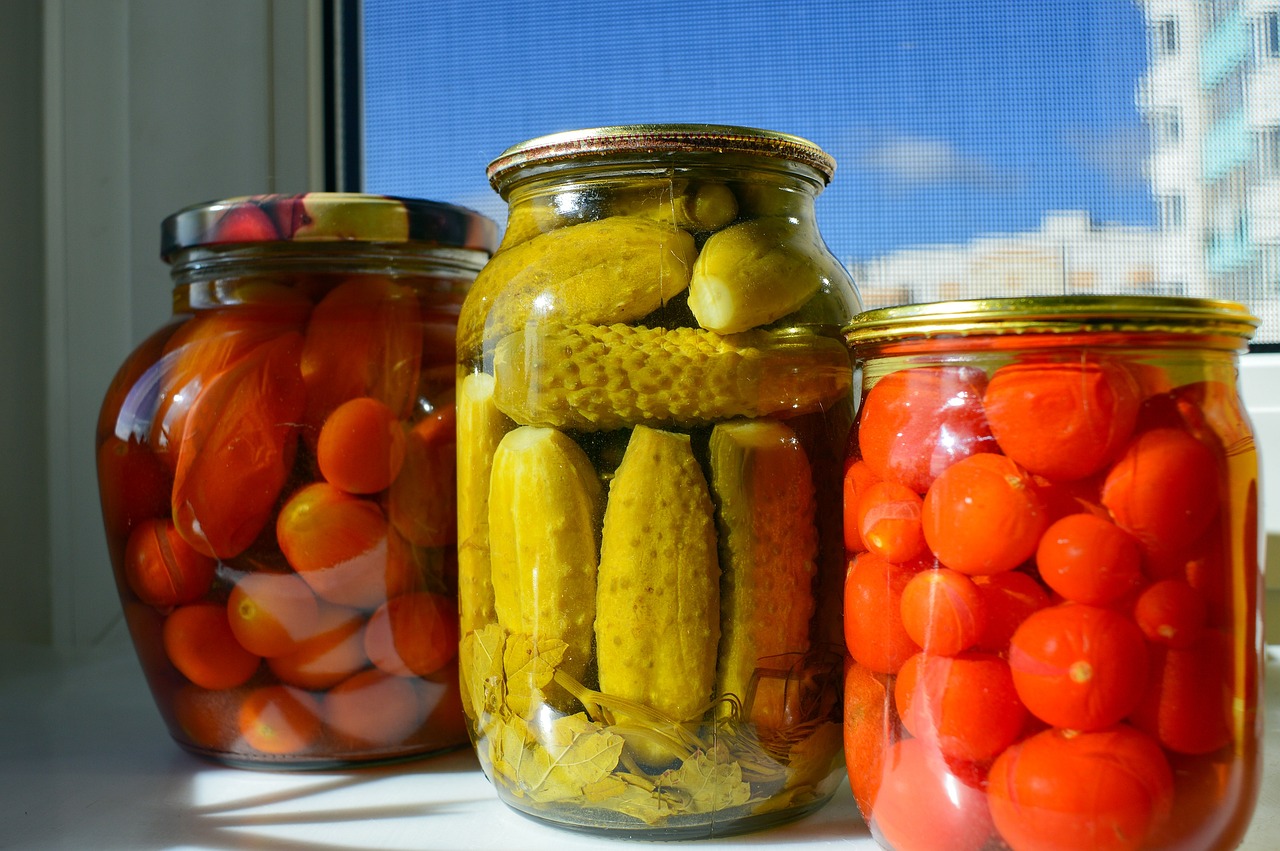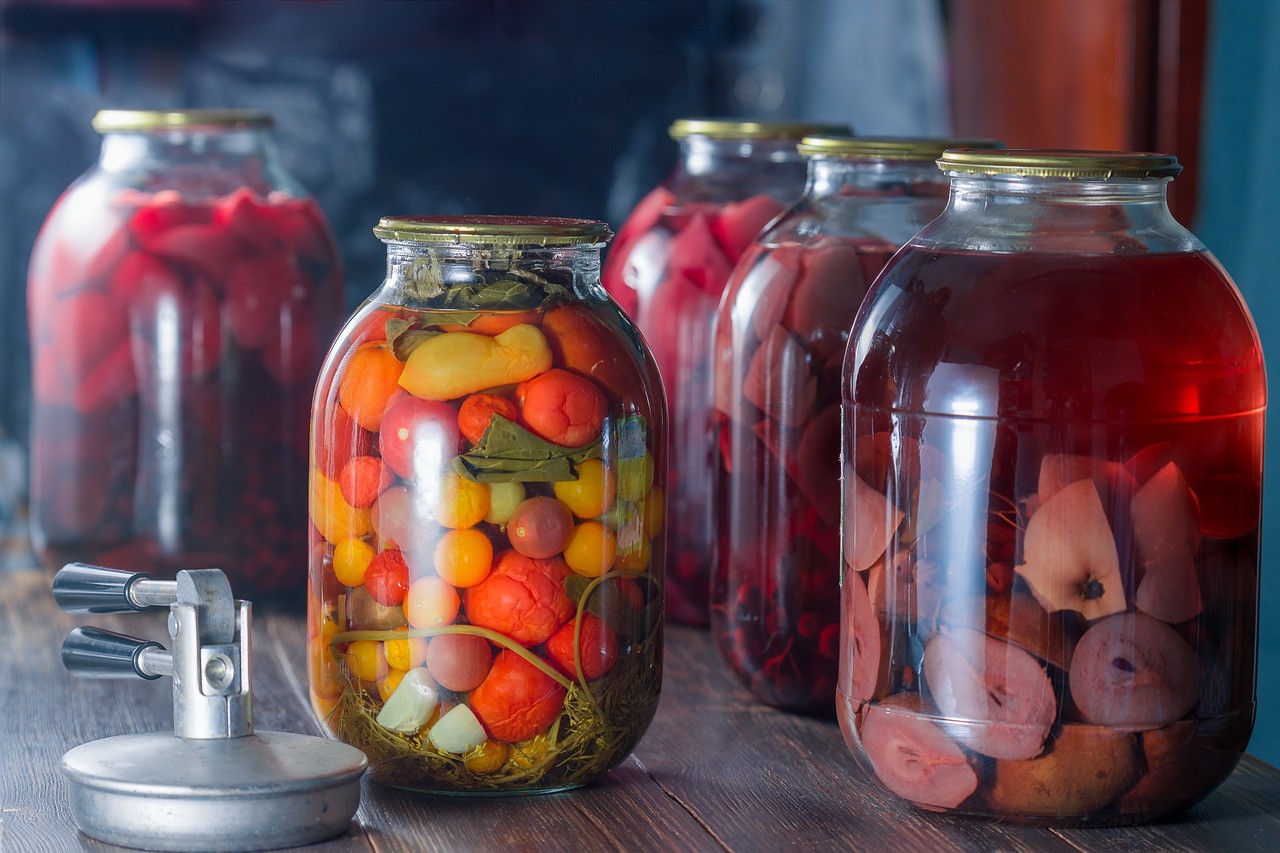Unquestionably, there can be a satisfying feeling when you dive into a jar of canned or pickled delicacies. In addition to demonstrating the skill of preservation, the robust, delectable, and occasionally spicy flavor encourages culinary innovation. Like me, many people’s favorite foods—like pickled okra, red onions, palm hearts, and mushrooms—can be used as the centerpiece of a dinner or as a simple snack. They are essential ingredients in kitchens all around the world, including those of the nation’s best chefs, due to their variety and convenience.
Chefs’ favorite preserved items
Rich flavors can be found in the cans on the shelves, but when we think of the staple foods in the pantry, we usually think of dry items like rice and pasta. Capers, for instance, are a tiny but effective element that can turn a dish from mediocre to spectacular. Ed’s Lobster Bar chef Ed McFarland commended their significant contribution to salads, chicken, and fish sauce. One example of how these salty sprouts may enhance the flavor of a basic pasta dish is his recipe for tomato crunchy Capers pasta.
Chefs like Eastern Standard’s Nemo Bolin tout the health benefits and versatility of fermented dishes like sauerkraut and kimchi. These tart delicacies can be mixed into hearty salads or used in slow-cooked braises. They can even be mixed with other condiments to create new flavors. Fermented foods may revolutionize cooking, as demonstrated by Bolin’s recipe for Easy Braised Chicken with Kimchi.
Pickling isn’t just for cucumbers; chefs are now pickling cauliflower and tomatoes. According to Mike DeCamp of Jester Concepts, jarring and preservation are essential components of Minnesota cuisine due to the state’s short growing season. His love of pickling even reaches unexpected places, such as leftover rice, which he uses to provide a tasty flavor to scrambled eggs.
The list of preserved foods that chefs adore is endless, and each one contributes a distinct flavor character. Among the chili pastes that Chef Lindsay Autry of the Regional Kitchen & Public House finds essential for giving food a kick are kimchi paste, chipotles, and aji amarillo. She also frequently uses pickled veggies, olives, and jarred artichokes to bring taste and variation to salads or pasta dishes that need a change of pace.

I’m going to present you with a pickled cauliflower recipe where you can alter up the veggies to your desire.
Ingredients
- 4 cups distilled white vinegar
- 4 cups water
- ½ cup sea salt
- 1 head cauliflower, broken into florets
- 3 hot chile peppers, sliced lengthwise
- 3 cloves garlic, minced
- 3 teaspoons mustard seed
- 3 teaspoons whole black peppercorns
- 3 teaspoons coriander seeds
- 3 teaspoons dill seeds
- 3 teaspoons allspice berries
- 1 ½ teaspoons red pepper flakes
- 3 bay leaves

Steps:
- Inspect three quart-sized jars for cracks and rings for rust, discarding any defective ones. Immerse in simmering water for at least 5 minutes.
- Meanwhile, put vinegar, water, and salt in a pot over medium heat; bring to a simmer.
- Pack each sterilized jar with equal numbers of cauliflower, chili peppers, garlic, mustard seed, peppercorns, coriander seeds, dill seeds, allspice berries, red pepper flakes, and bay leaves. Pour vinegar mixture into jars, filling to within 1/2 inch of the top. Run a clean knife or thin spatula along the insides of the jars to remove any air bubbles. Wipe the rims with a damp paper towel to remove any residue. Top with lids and screw rings on tightly.
- Place a rack in the bottom of a big stockpot and fill halfway with water. Bring to a boil and lower jars 2 inches apart into the hot water using a holder. Pour in extra boiling water to cover jars by at least 1 inch. Bring to a rolling boil, cover, and process for 10 minutes.
- Remove the jars from the stockpot and place onto a cloth-covered or wood surface, several inches apart, until cold. Press the middle of each lid with a finger to ensure the lid does not move up or down. Remove the rings for storage and keep in a cold, dark spot.
The recipe is referenced in: Pickled Cauliflower

The appeal of preserved foods is their flavor and ability to inspire in the kitchen
Jean Marie Rouger, Global Head Baker of Marie Blachère, is a big fan of raspberry jam, especially the Red Raspberry St. Dalfour type. He values the jam’s organic ingredients and how well it pairs with pastries like brioche and almond croissants. Richard Hales of Grateful Hospitality, on the other hand, believes that peanut butter and other nut butters are the best survival food and are necessary for surviving any emergency.
Another adaptable sweetener that cooks like Judy Joo use in a variety of applications, from yogurt to salad dressings, is honey, particularly raw natural or manuka honey. Her recipe for Honey Cake is only one example of how honey may be used in savory and sweet recipes.
David Lee of Planta shares the passion for anything fermented and thinks that products like kimchi, bomba chili, or antipasto can be simply added to salads and bowls for a little more zing. Menapace’s favorite pickled banana peppers make a simple garnish for salads or sandwiches or can be used as the base for a delicious relish.

Exploring pantries reveals chefs’ hidden jarred treasures that enhance dishes to perfection
The tomato crispy croissant that chef Ed McFarlane, the master of Ed Lobster Bar, makes is a demonstration of his culinary prowess. This recipe is a perfect example of how the salty essence of these little, tasty pearls of spiciness can enhance a dish’s flavor. It should come as no surprise that Chef McFarlane uses the adaptable prickly mountain oranges as a mainstay in his cooking since they improve the flavors of salads, chicken meals, and sauces.
Chef Daniel Levine at Dasher & Crank uses Harissa as a hidden ingredient. He believes that a dab of this North African chili paste can add a lively kick to anything, including braises and eggs. One recipe that demonstrates how the condiment can give food a vibrant, strong flavor is Levine’s Rosy Harissa Chicken. To really appreciate Harissa’s versatility, he advises domestic cooks to try Northern African dishes like Shakshouka.
Eastern standard chef Nemo Bolin has not forgotten the health benefits of fermented meals. He recommended incorporating pickled Chinese cabbage and kimchi into a rich salad or adding them to a slow stew, highlighting their versatility. An excellent illustration of how these potent ingredients may raise the bar for a dish is Bolin’s recipe for kimchi stewed chicken.

Because of the short growing season in Minnesota, Chef Mike DeCamp of Jester Concepts celebrates the local custom of jarring and preserving. In addition to a wide range of vegetables, he also enjoys pickling leftover rice, which he deftly adds to scrambled eggs. One meal that honors the craft of pickling and preserving is DeCamp’s Muffuletta.
Chef Andrew Zimmerman of Chicago’s Proxi and Sepia considers Indian mango pickle to be a preserved gem. Seasoned with fenugreek, asafoetida, pepper, and mustard seed, he calls it a flavor powerhouse. For a distinctive flavor twist, Zimmerman recommends using it in rice dishes or making an aioli.
There is a wealth of flavors in the world of canned, pickled, and preserved foods just waiting to be discovered. These gems inspire innovation and creativity in the kitchen in addition to bringing life to the food. These delicious delights will undoubtedly improve your cooking skills and pique your taste senses, whether you are a professional chef or a home cook.

Pickled Cauliflower
Ingredients
- 4 cups distilled white vinegar
- 4 cups water
- ½ cup sea salt
- 1 head cauliflower broken into florets
- 3 hot chile peppers sliced lengthwise
- 3 cloves garlic minced
- 3 teaspoons mustard seed
- 3 teaspoons whole black peppercorns
- 3 teaspoons coriander seeds
- 3 teaspoons dill seeds
- 3 teaspoons allspice berries
- 1 ½ teaspoons red pepper flakes
- 3 bay leaves
Instructions
- Inspect three quart-sized jars for cracks and rings for rust, discarding any defective ones. Immerse in simmering water for at least 5 minutes.
- Meanwhile, combine vinegar, water, and salt in a pot over medium heat; bring to a simmer.
- Pack each sterilized jar with equal amounts of cauliflower, chile peppers, garlic, mustard seed, peppercorns, coriander seeds, dill seeds, allspice berries, red pepper flakes, and bay leaves. Pour vinegar mixture into jars, filling to within 1/2 inch of the top. Run a clean knife or thin spatula around the insides of the jars to remove any air bubbles. Wipe the rims with a moist paper towel to remove any residue. Top with lids and screw rings on tightly.
- Place a rack in the bottom of a large stockpot and fill halfway with water. Bring to a boil and lower jars 2 inches apart into the boiling water using a holder. Pour in more boiling water to cover jars by at least 1 inch. Bring to a rolling boil, cover, and process for 10 minutes.
- Remove the jars from the stockpot and place onto a cloth-covered or wood surface, several inches apart, until cool. Press the center of each lid with a finger to ensure the lid does not move up or down. Remove the rings for storage and store in a cool, dark area.
Notes
Related posts:
The 22 Best Jarred Items to Have in Your Pantry, According to Chefs
The Best Snacks Come in Cans and Jars
The Best Pickle Brands, According to Our Test Kitchen [Updated 2023]




